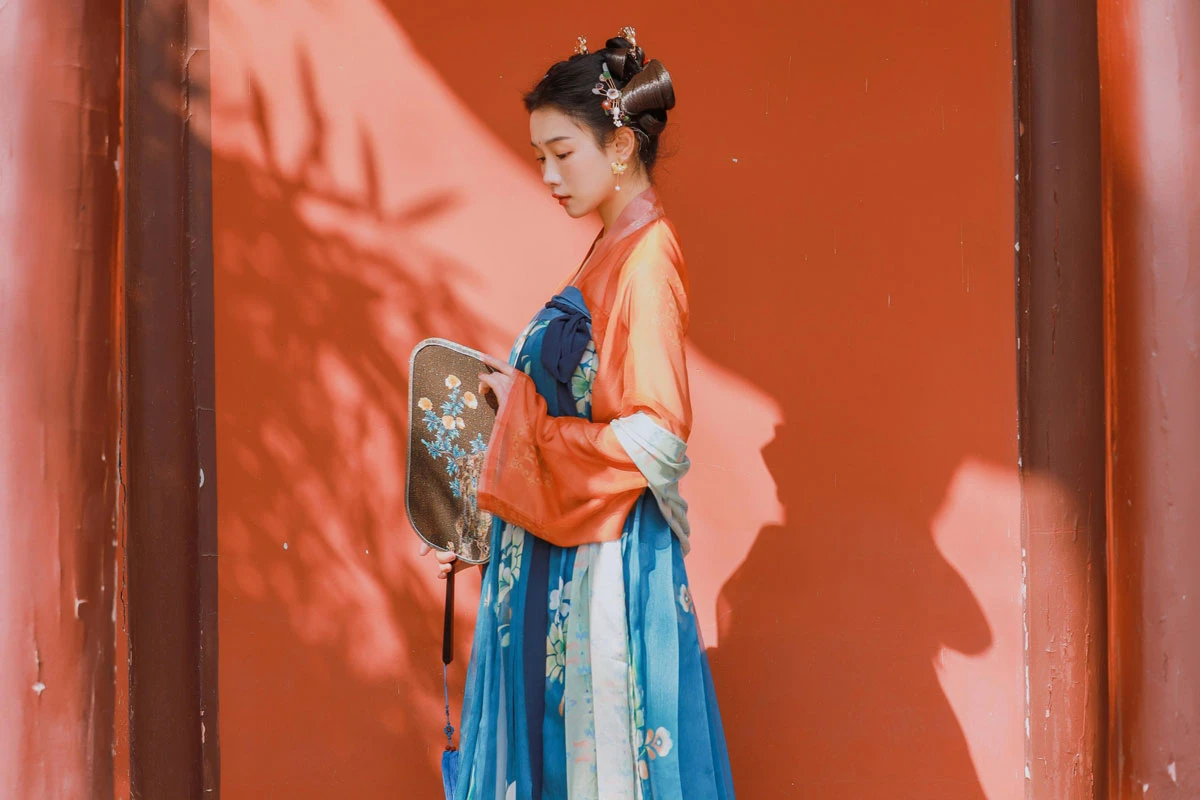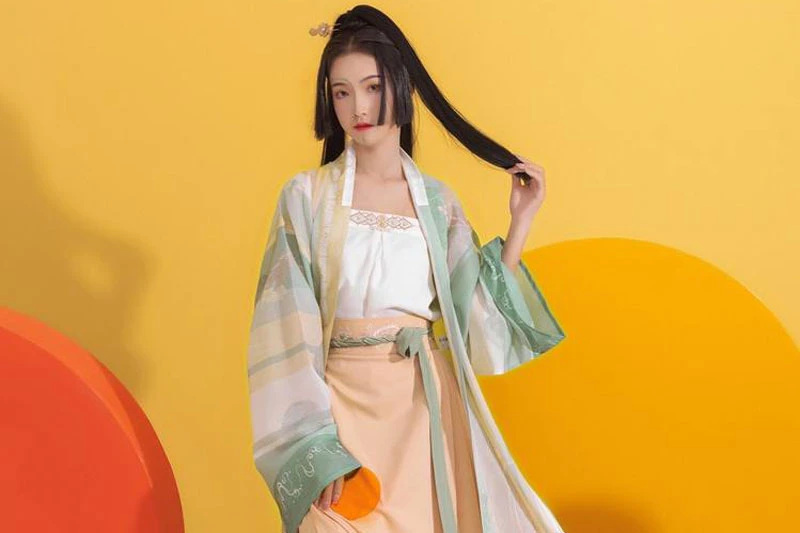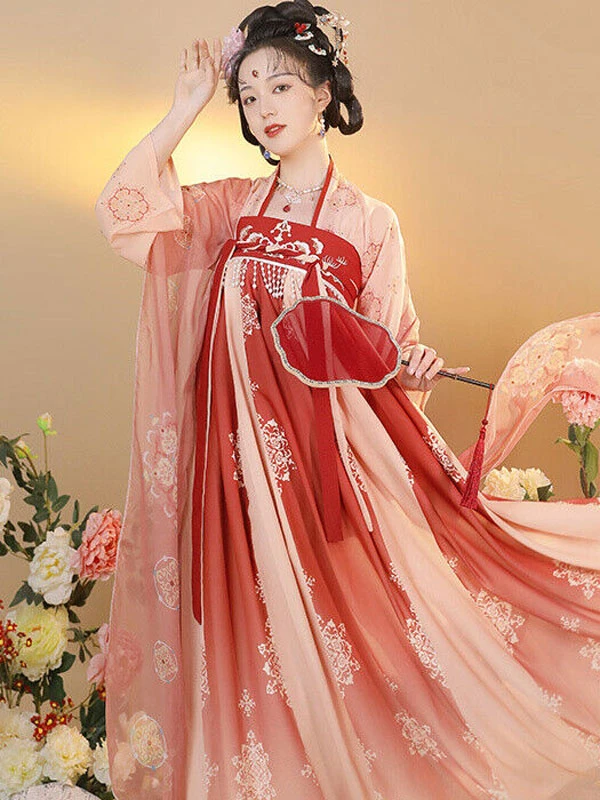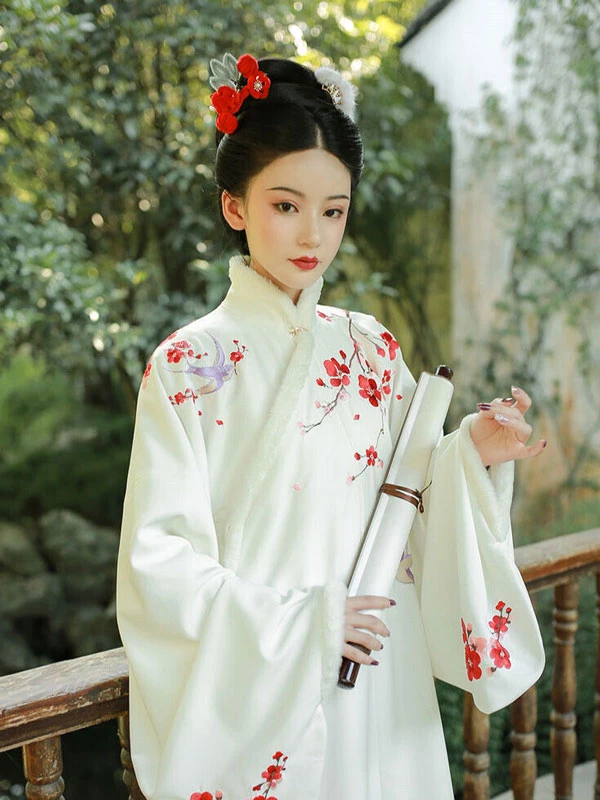In the art of dress, color is a very important component. So much that even in ancient times, it was considered. Chinese dress colors date way back to when cavemen in Beijing used red stone powder to dye their jewelry. In China, the colors were largely learned from flowers, bird feathers, and nature in general. This was then imitated in the dyes and became a system eventually. The season’s transformation was the rule of expressing and using colors.
In painting, the colors were mixed, and the different compass directions were represented with a color. For instance, the symbol of the North was black, white for the west, red for the south, and cyan for the east. Dark black, or Xuan, represented the sky, whereas that of the earth was yellow, considering its center is yellow. For Wuxing, the five elements, wood, fire, earth, water, and metal are also represented by cyan, red, yellow, black, and white, respectively. The same goes for the four seasons: autumn is white, summer is red, spring is green, and winter is Xuan. The symbolism in color theory is the movement of earth and heaven and the cycle of the universe.
Top 10 Most Popular Colors of Traditional Chinese Dress
Mianfu was the highest level of dress for the emperor in ancient times. On the other hand, the queen had six different high standards, all of which had special representations. In the Han Dynasty, they wore different colors according to the season. Four season dresses were later developed for women based on natural sky colors, flowers, moon, snow, ice, neon, and the sun.
It is also true that the classical color scheme in labor, philosophy, and poetry are all color based. This is depicted in ancient texts, song lyrics, paintings, and Tang poems. For women’s dresses, designers used various traditional methods of color dyeing to achieve the desired results. This included dyeing using bluegrass in grass dyeing and ores like cinnabar also referred to as stone dyeing. It was all like wearing nature on your body which people loved.
The ten traditional Chinese Colors are peach red, Quchen, plum red, true red, begonia red, pomegranate red, Roulan, Yujin, snow, and goose yellow colors. These colors would be changes on empresses and working women according to the seasons to praise women’s virtues, unite solemn rituals, and even reflect the philosophy. The traditional colors are still very popular among history and culture enthusiasts today.
You will find hanfu dresses in beautiful traditional colors, especially reds. With a little history in mind, you will manage to carry yourself in dignity and elegance in whichever color you choose for your hanfu, as highlighted below.
1. Quchen color, Light yellow-green
The yellow-green color is the color of the first mulberry sprouts, willow leaves, and wine-bent fungal color. The empress Juyi would wear the color in spring as she worshipped the silkworm gods and would pick the mulberry leaves for silkworm raising. This is a popular floral hanfu color among women, especially in spring. Below is a good example of a Light yellow-green hanfu you can wear today.
2. Zhusha red color
This is considered the brightest and purest red color, Zhuhong, in Chinese. Cinnabar dyeing was used for this, especially in the Zhou and Shang periods. If true, deep red is your favorite color, the classic zhusha red hanfu dress will appeal greatly. The color, together with the exquisite embroidery, commands attention in a very elegant manner.
3. Peach Color
It is commonly referred to as peach blossom color and is charming and delicate. Red flowered Rubia cordifolia was used to achieve the color. In modern times, different methods are used to achieve the color, and you will find beautiful, floral, printed, and embroidered hanfu dresses to match your color desires. See an example of a peach red color dress below.
4. Roulan color
It was a lovely blue color called cyan in ancient times. This color can mimic emerald blue, sky blue, and treasure blue, among others. It gets its name from the bluegrass hand kneading used to get dyeing juice. The color is cool and calm, appealing to most women, even in modern times.
5. Pomegranate color
This color best suits summer when the blossoms of the pomegranates are a fiery red, like fires. Women who generally feel passionate inside love the daring red and use it to express their personalities. Stand out in summer in this cute dress.
6. Begonia color
Begonia red is a red that falls a little on the purple side, just like a begonia is when fully bloomed. It is a beautiful color loved by women because of how easily it attracts attention.
7. Plum red
It is the color of red plum blossoms, hence the name. This color is considered most suitable in winter, during which the blossoms thrive. Wearing the color will keep you one with nature. Plum red is mentioned in ancient poems repeatedly as a show of heart status. In modern hanfu dresses, you can also find the beautiful color in solid or coupled with plum blossoms. You can choose prints and embroidery as you prefer; the options are endless.
8. Yujin color
This is a vivid golden color, like the Yujin medicinal herb. Loved deeply in ancient times, and still a color that appeals because of how charming and warm it is. A hanfu in this color will make anyone pop in majestic beauty.
9. Goose yellow
This color is light yellow and soft to the eyes. It takes its name from the fuzzy yellow goose and is charming and bright. Those familiar with the Princess Xincheng tomb mural painting will notice the woman wearing this color. Simple elegance is what color is all about.
10. Snow white
The color here is white, symbolizing ice, snow, white flowers, and moonlight. It makes a lovely choice for winter when there is plum, moon, and snow to enjoy. You can never go wrong with a white hanfu.
Summary
The hanfu dress is not limited to these popular traditional colors. Whatever your personality and preference, you will find dresses in your favorite colors so you can step out in style and confidence every time.





